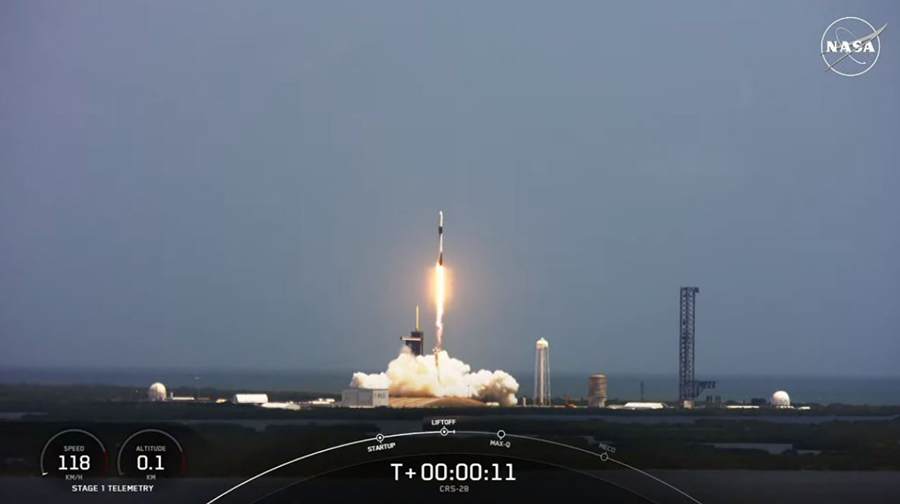Maya-5 and Maya-6 are now on board the International Space Station (ISS).
The latest batch of locally developed cube satellites (CubeSats) were launched to the ISS close to midnight of June 5 (11:47 p.m. Philippine Standard Time).
The CubeSats were developed by Filipino university scholars in Japan: Angela Clarisse Chua, Anna Ruth Alvarez, and Khazmir Camille Valerie Macaraeg, Ronald Collamar, Chandler Timm Doloriel, Joseph Jonathan Co, Genesis Remocaldo, and Gio Asher Tagabi.
Maya-5 and Maya-6 were aboard the SpaceX Falcon 9 as part of SpaceX’s 28th commercial resupply mission.
Once they are released in space, the CubeSats, each weighing 1.15 kilograms, will move along an orbit similar to that of the ISS at an altitude of approximately 400 kilometers. The release date has yet to be announced.
Once Maya-5 and Maya-6 are deployed, they will be operated through Philippine Universities Ground Archiving and Data Reception (PUGAD) station at the University of the Philippines Diliman.
Maya-5 has the same mission payload as that of Maya-2, and Maya-6 has an experimental on-board computer mission payload, the Philippines Space Agency said yesterday.
It is the 6th milestone launch to space, an addition to the roster of nanosatellites developed and sent to space by Filipino engineering students.
The Maya-5 and Maya-6 CubeSats were built under the Space Science and Technology Proliferation through University Partnerships (STeP-UP) project of the STAMINA4Space Program funded by the Department of Science and Technology (DOST).
The program is implemented by UP Diliman and DOST’s Advanced Science and Technology Institute (ASTI). It is part of the Master of Science or Master of Engineering nanosatellite program of the UP Electrical and Electronics Engineering Institute (EEEI) in collaboration with the Kyushu Institute of Technology in Fukuoka Prefecture, Japan.
The scholarships are supported by DOST’s Science Education Institute (SEI).
“With the experience and knowledge that our scholars, scientists, and researchers have gained, we will develop a new power generation which will bring in many more space technological breakthroughs,” said Dr. Franz De Leon, ASTI director.
“We continue to strive to pave the way for more talented young people to pursue careers in science, technology, engineering and mathematics and assure that space science and engineering will always be a priority in the scholarship program,” said Dr. Josette Biyo, SEI director.
Maya-5 and Maya-6 are the second set of Philippine university-built CubeSats and, similar to its predecessors, provide local opportunities to acquire space technology know-how and hands-on experience in satellite development. It is designed to scale-up domestic capabilities by transitioning to locally available components, fabricated boards, and manufactured structural frames.
The development of the CubeSats is part of the course requirements of the UP EEEI’s nanosatellite engineering track.
The Maya-5 and Maya-6 CubeSats are a technology demonstration and educational platform developed for remote data collection through Store-and-Forward Mechanism, similar to its predecessor from Kyutech’s 4th Joint Global Multi-Nation Birds Satellite Project, Maya-2, which was decommissioned on July 5, 2022.
The first CubeSat built by Filipino engineering scholars was the Maya-1, launched June 29, 2018. Its space mission ended on November 23, 2020.




